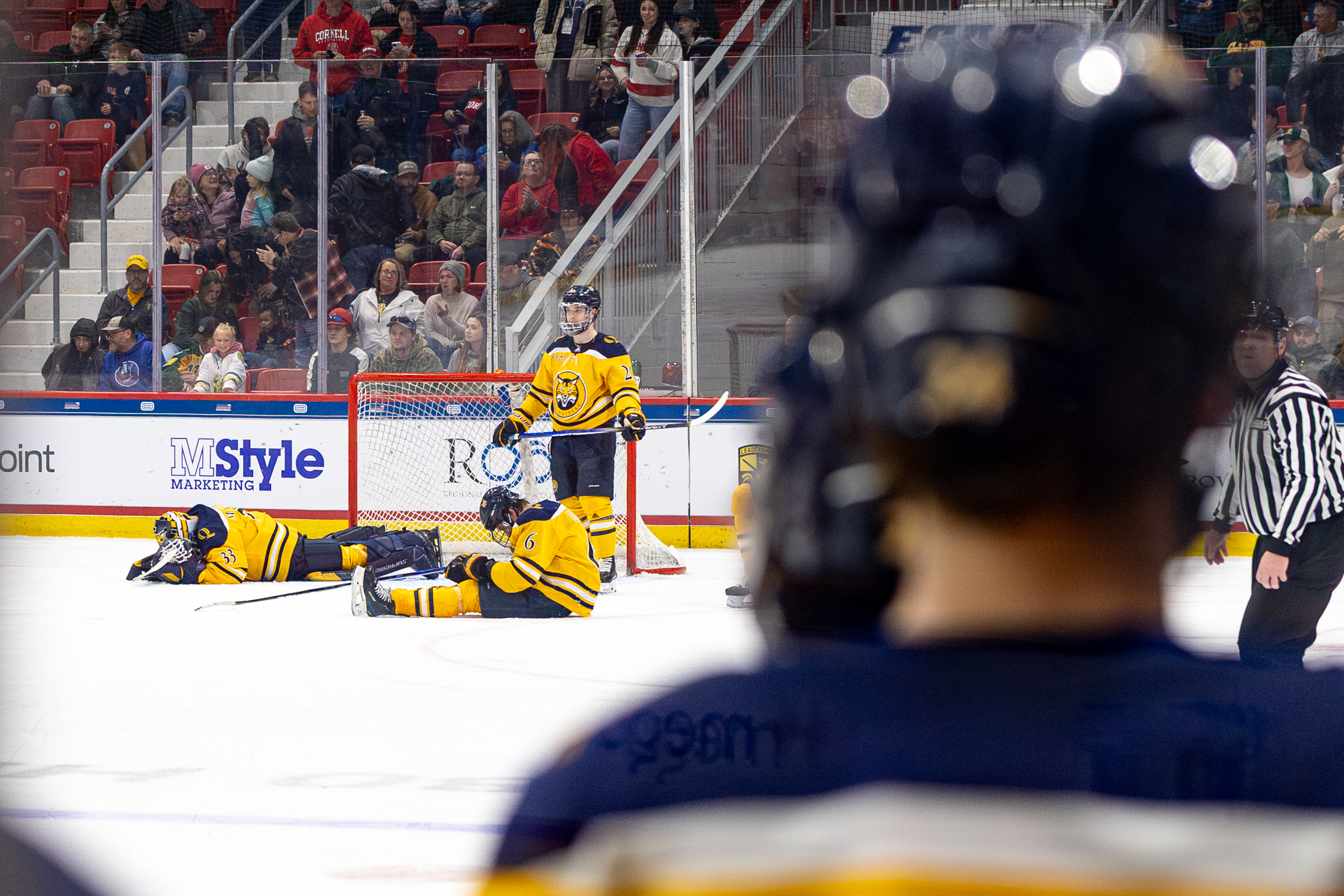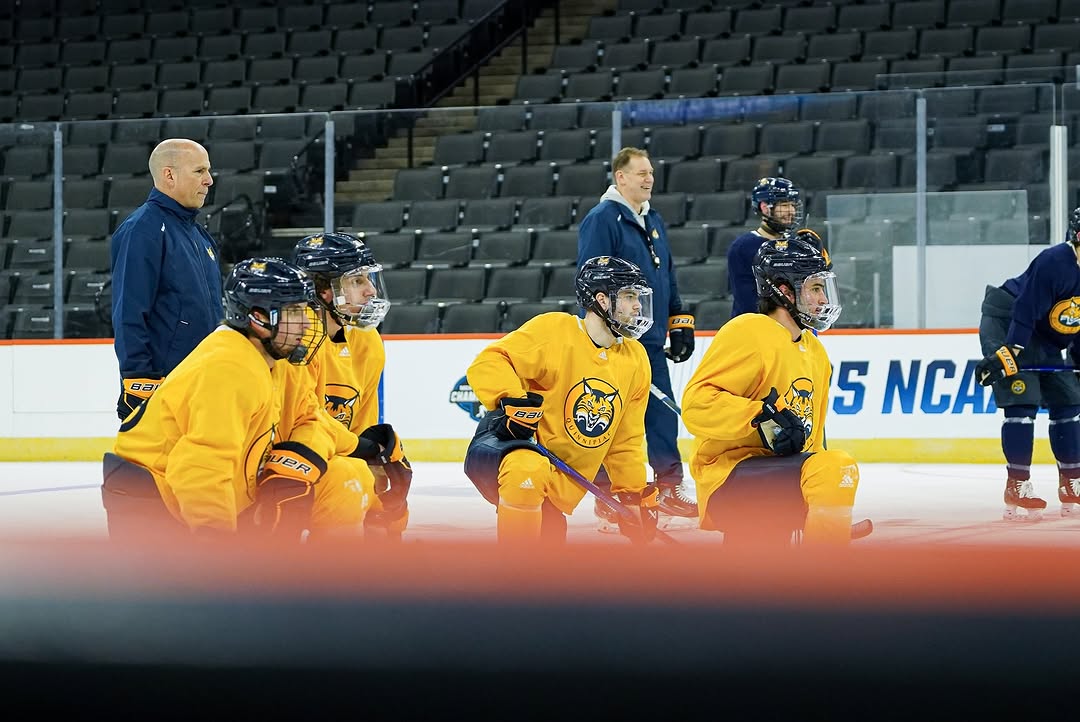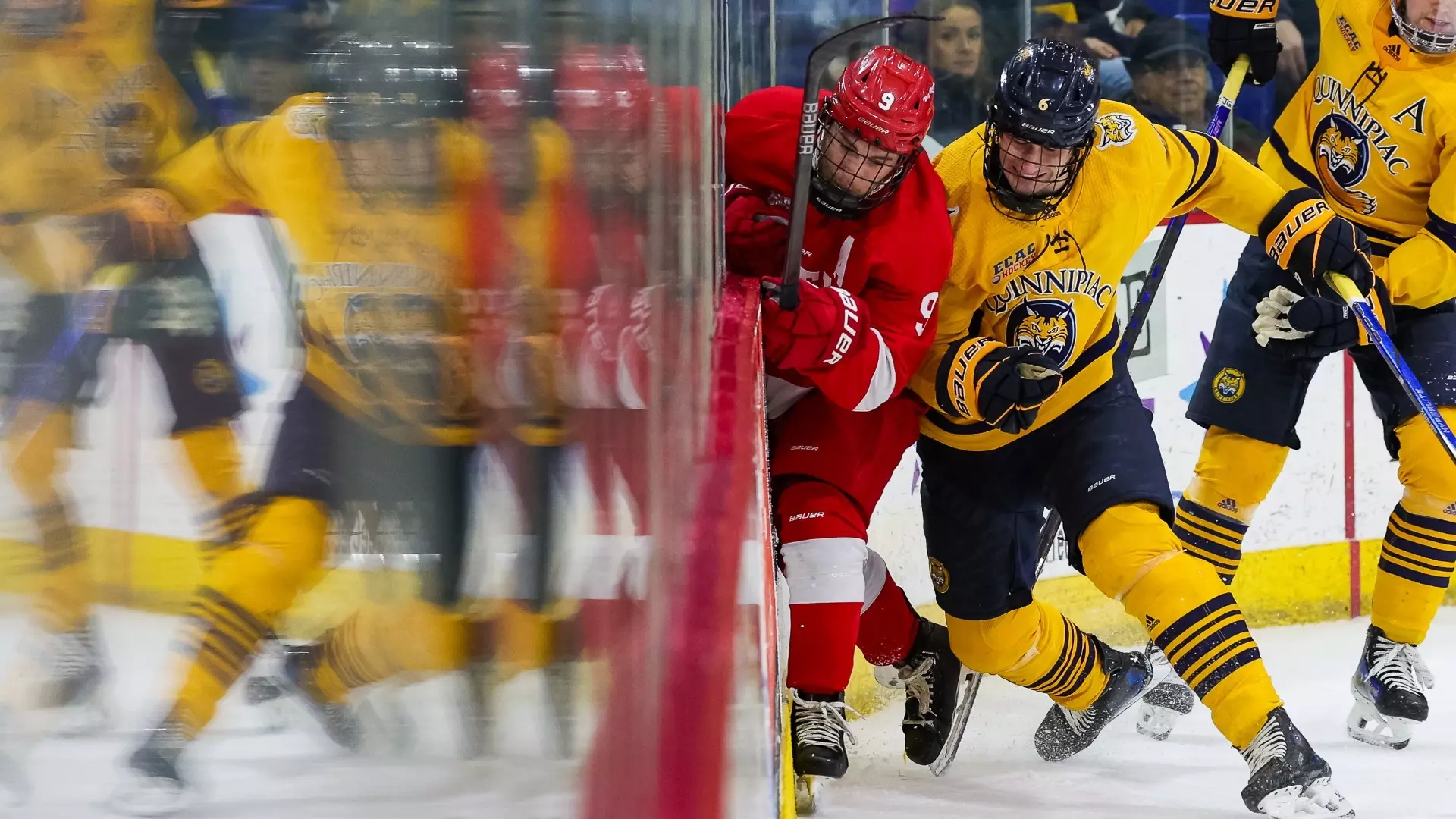By Cameron Levasseur
Late in the evening of March 21, members of Quinnipiac’s men’s hockey team wandered the streets of Lake Placid, New York, in a daze. Others huddled in crowded booths at The Pickled Pig, a restaurant in the shadow of Herb Brooks Arena, where several truths loomed large.
The Bobcats late ECAC Semifinal collapse against Cornell a few hours earlier was the eighth-straight season they’ve bowed out of the conference tournament empty handed, a legacy of disappointment familiar to everyone in attendance.
And this time, it might have cost them an NCAA Tournament bid.
See, unlike every other NCAA tournament, no sense of mystery accompanies Selection Sunday in hockey. By Saturday night, every team knows if they’re in or out. The fate of at-large bids lies not with a committee, but with math. And Quinnipiac’s formula was slightly off.
The Pairwise Comparison System (commonly referred to as the Pairwise), was adopted by the NCAA Men’s Ice Hockey Committee in early 1990’s as an objective method of comparing teams, and was picked up by the women’s ice hockey committee when it became an NCAA championship sport in 2001. In the early 2000’s it began to be used as the sole determinant of at-large bids in both tournaments. That methodology has continued into the present day.
16 teams make the men’s tournament, each of the six conference tournament winners receive automatic bids, the next 10 teams in the Pairwise are the at-large qualifiers.
A team’s Pairwise position is determined by a direct comparison with every other team in three metrics: 1. Adjusted Ratings Percentage Index or RPI, 2. Record versus common opponents and 3. Head-to-head record.
In a comparison, a team is awarded one point for having the higher RPI, one point for the best record vs. common opponents, one point for the best head-to-head record (if applicable) and one point for each head-to-head win.
The team with the most comparison wins is No. 1 in Pairwise, the team with the second most slots in at No. 2 and so on until every team is ranked.
In a world where every conference champion sits within the top 16 of the Pairwise, the last at-large bid is the No. 16 team. But that’s not the reality of the college hockey landscape. Smaller conferences, such as Atlantic Hockey America and the CCHA, rarely put a team within those parameters, meaning their conference champions steal bids from teams on the fringes of NCAA Tournament contention.
This is the Pairwise bubble. It’s where Quinnipiac lived for all of the 2024-25 season.
After sputtering out of the Connecticut Ice Tournament in late January, Rand Pecknold acknowledged that truth.
“14 is probably not getting in,” Pecknold said. “We’ve got to get at least 13 and then we’ll have a really good chance, but it’s not guaranteed.”
Two months later, Quinnipiac entered that semifinal against Cornell No. 12 in Pairwise. A win over the Big Red all but guaranteed a ticket to the big dance. A loss put the Bobcats precariously on the edge of qualification.
Both AHA finalists sat outside the top 16, so the cut line began at 15. Quinnipiac was the only ECAC team in the top 16, so its semifinal loss moved the line to 14. Minnesota State, champion of the CCHA, owned that No. 14 spot, so the cut line was 13 as the evening turned to night.
If one of No. 16 Arizona State or No. 18 North Dakota won the NCHC, the cut line moved to 12. A Clarkson win over Cornell in the ECAC Championship the next night would push Quinnipiac down to No. 13 and out of the NCAA Tournament.
Both Arizona State and North Dakota lost their NCHC semifinal bouts. Cornell beat Clarkson. Quinnipiac hung on to the No. 12 spot and earned its sixth-consecutive tournament berth — barely.
“It’s not easy to come to the NCAA Tournament,” graduate student forward Travis Treloar said.
Such is life on the bubble. A couple of decimals points were the difference between playing for a Frozen Four berth and getting a head start on the offseason.
The same separated the Bobcats from a different first round matchup, a regional opponent other than red-hot in-state rival UConn, who dispatched Quinnipiac 4-1 with no issue in its tournament opener.
One late loss turned into a win — or a win becoming a loss, and the Bobcats tournament path, and potentially their ultimate fate, looks quite different.
Here are seven different scenarios from the 2024-25 season that could have majorly altered Quinnipiac’s trajectory.




